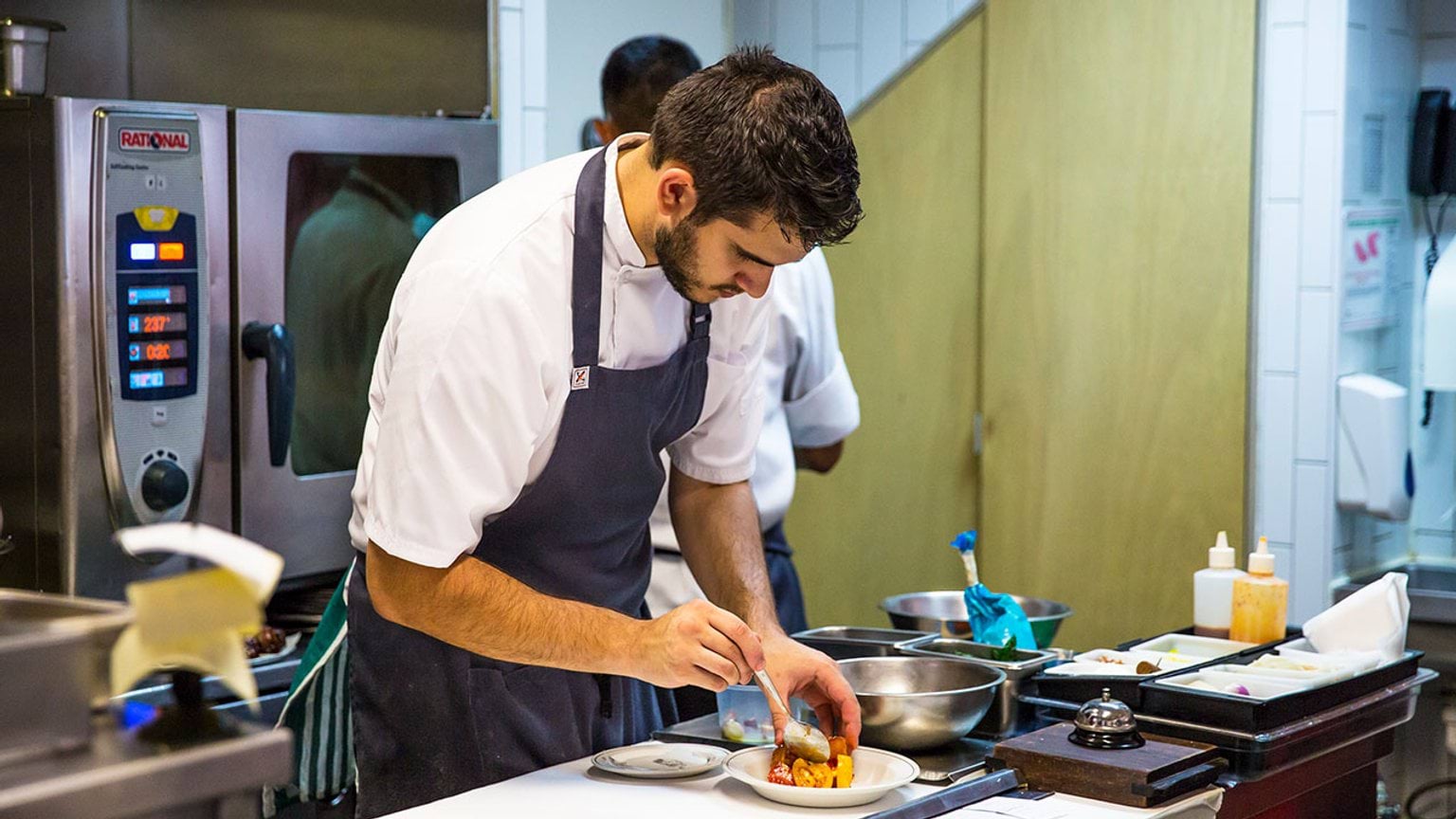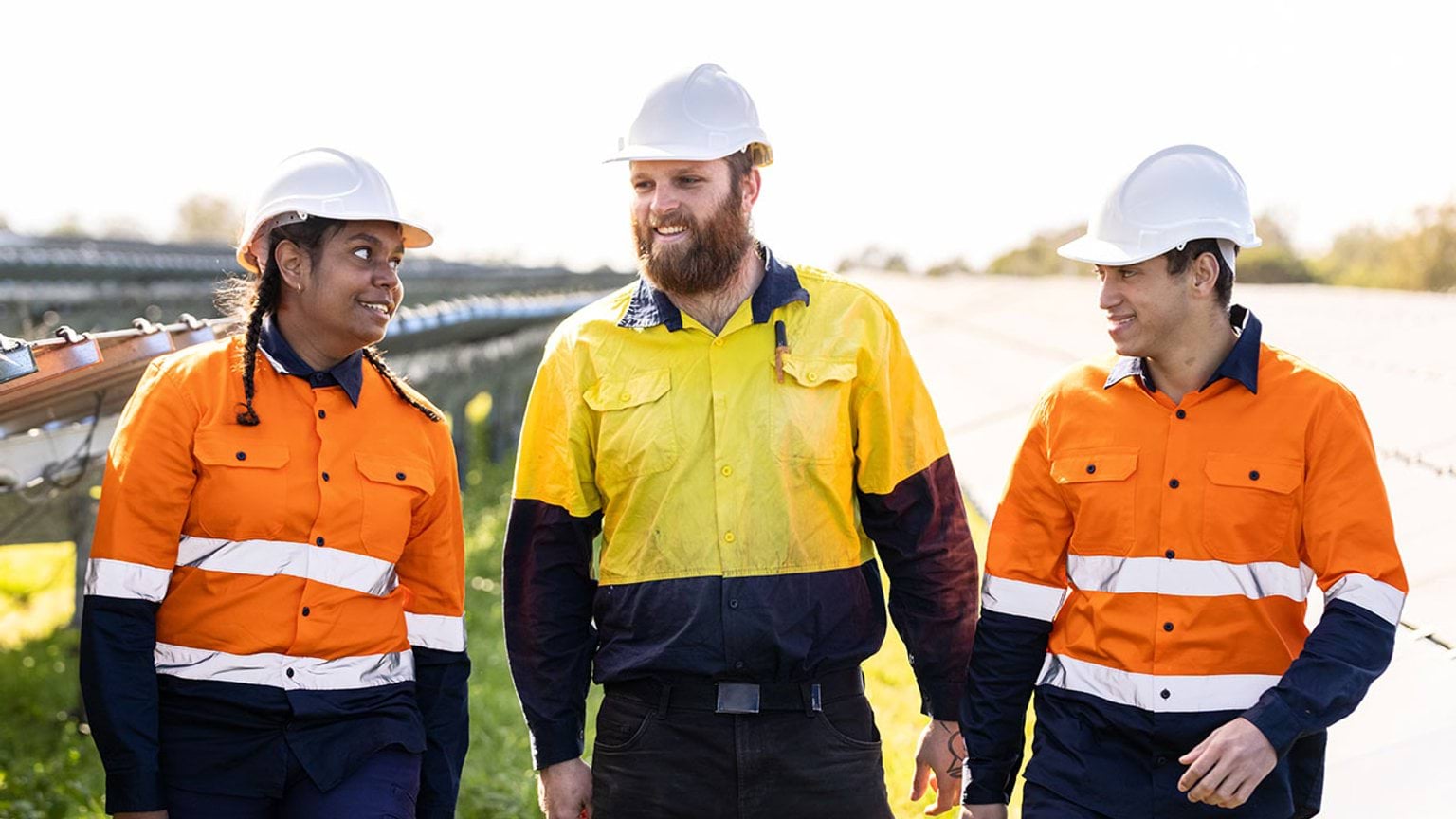Steel and welding workers build, repair and maintain steel and metal parts. This is a great role for people who enjoy hands-on work.
Find out what a steel and welding worker does and the related Vocational Education and Training (VET) courses and pathways you can take to secure a job.
What is a steel and welding worker?
As a steel and welding worker, you might work on steel or metal structures, boilers, pipes, ships or other vessels.
You may:
- use blueprints and specifications to guide your work
- use hand tools, flame-cutting torches or metal-cutting machines
- participate in quality control and safety procedures.
Basic knowledge of engineering and building techniques is also useful.
Find out more about steel and welding workers and these related jobs on the Victorian Skills Gateway(opens in a new window):
- boiler or engine operator(opens in a new window)
- building and engineering technician (other)(opens in a new window)
- business machine mechanic(opens in a new window)
- cement and concrete plant worker(opens in a new window)
- chemical plant operator(opens in a new window)
- chemical plant worker(opens in a new window)
- chemical production machine operator(opens in a new window)
- clay processing factory worker(opens in a new window)
- electrician (general)(opens in a new window)
- electronic engineering technician(opens in a new window)
- engineering production worker(opens in a new window)
- factory process worker(opens in a new window)
- fitter (general)(opens in a new window)
- fitter and turner(opens in a new window)
- mechanical engineering draftsperson(opens in a new window)
- mechanical engineering technician(opens in a new window)
- metal engineering process worker(opens in a new window)
- metal fabricator(opens in a new window)
- plastics and rubber production machine operator (other)(opens in a new window)
- product assembler(opens in a new window)
- recycling worker(opens in a new window).
Related training courses
Explore these related TAFE and training courses on the Victorian Skills Gateway(opens in a new window):
- electrical technology(opens in a new window)
- engineering(opens in a new window)
- steel and welding(opens in a new window).
You may be eligible for government funding to help pay for your course.
Median salary
The median weekly earnings for structural steel and welding trades workers in Australia is $1,755.
Source: Jobs and Skills Australia(opens in a new window)
Note this salary is current as of January 2025 and is indicative only. A range of salaries apply to different roles across the industry.
Job demand in Victoria
Below are the employment projections for structural steel and welding jobs in Victoria. Figures show the number of workers in 2024 and the new workers expected to enter the workforce by 2027 and 2034.
‘New workers expected’ accounts for workers adding new jobs to the economy and replacing retirees over the next 3 and 10 years. These projections are estimates only. There will be additional jobs available as people move between jobs and industries.
| Region | Workers 2024 | New workers expected by 2027 | New workers expected by 2034 |
|---|---|---|---|
| Victoria | 14,351 | 1,501 | 5,030 |
| Melbourne – inner metropolitan | 277 | 39 | 130 |
| Melbourne – inner south-east metropolitan | 151 | 16 | 51 |
| Melbourne – southern metropolitan | 2,935 | 279 | 1,023 |
| Melbourne – northern metropolitan | 1,775 | 212 | 759 |
| Melbourne – eastern metropolitan | 1,698 | 145 | 534 |
| Melbourne – western metropolitan | 1,941 | 282 | 958 |
| Ballarat and surrounds (Central Highlands) | 738 | 80 | 208 |
| Bendigo, Echuca and surrounds (Loddon Campaspe) | 834 | 67 | 253 |
| Geelong, Colac and surrounds (Barwon) | 780 | 129 | 316 |
| Gippsland | 1,114 | 79 | 312 |
| Horsham and surrounds (Wimmera Southern Mallee) | 201 | 15 | 35 |
| Mildura, Swan Hill and surrounds (Mallee) | 422 | 30 | 74 |
| Shepparton, Seymour and surrounds (Goulburn) | 566 | 45 | 158 |
| Wangaratta, Wodonga and surrounds (Ovens Murray) | 520 | 31 | 123 |
| Warrnambool, Hamilton and surrounds (Great South Coast) | 400 | 53 | 96 |
Source: Victorian Skills Authority Employment Projections Dashboard
Resources to plan your next steps
Visit our manufacturing industry profile to find out about:
- what it’s like to work in manufacturing, and some of the jobs you could do
- training and skills to work in the industry, and financial assistance to help pay for your course
- help getting a job in manufacturing, and industry job projections for Victoria
- other free resources and advice to plan your training and career.
Explore growing industries in your region
Updated



